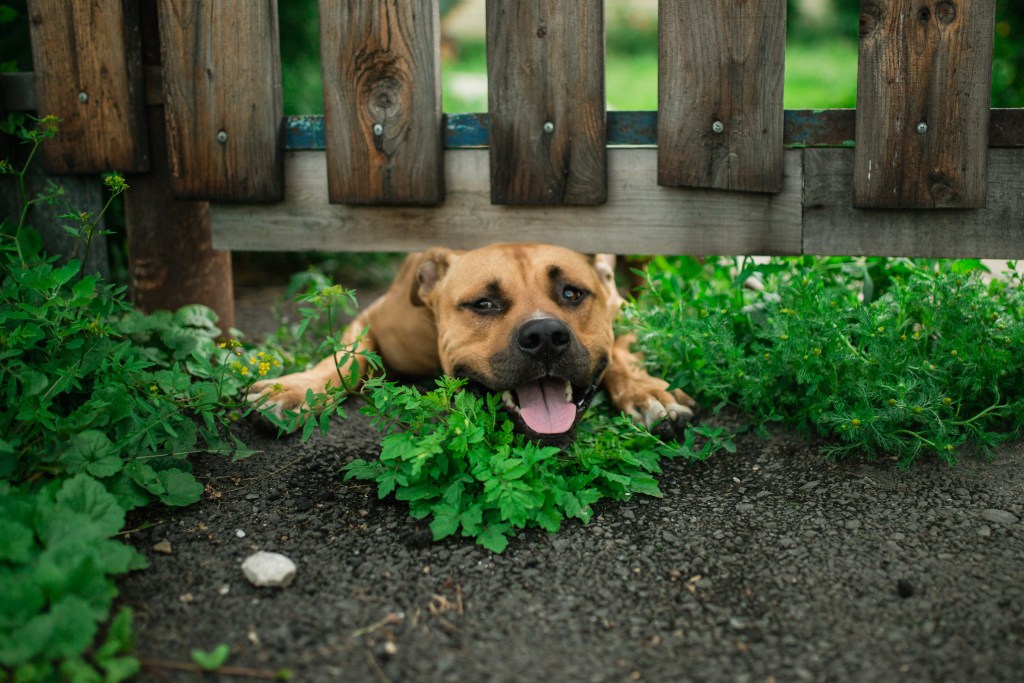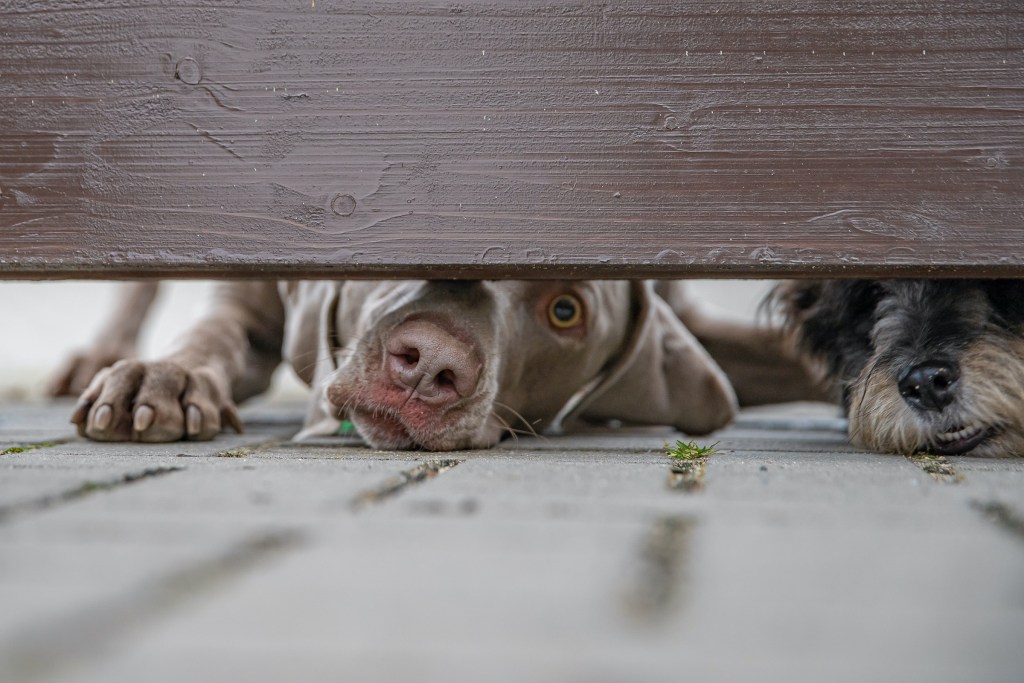Whether your pup is a master escape artist or just has more energy than they know what to do with, escaping can be a serious problem. Not only can it destroy the yard and fence you work so hard to upkeep, but it can put your dog, your neighbors, and even yourself in some sticky situations.
Instead of waiting until it’s too big of a problem to ignore, nip your buddy’s habit in the bud by making a few home improvements. All you need to get started are a few dog-proof fencing ideas and some time to make it happen. From DIYs to renovations, these are some of the most effective ways to keep your hairy Houdini safely secured in your yard.

How to keep your dog from going under a fence
If your four-legged pal just can’t keep from digging, there are a few ways you can update your fence for their safety.
No-dig animal barriers
Many pet-supply stores carry Dig Defence No-Dig Animal Barriers, which you can easily install into the ground at the base of your fence. If your dog starts to dig, metal bars won’t let them get far!
Even if you don’t have extra change to put toward something fancy, you absolutely can invest in some cheaper, but just as effective, homemade remedies.
DIY anti-dig fence
Some pet parents have found success burying more of the fence underground so their dogs have nowhere to dig, while others do better by burying chicken wire underground. If you do this, make sure to tuck all sharp edges in!

What type of fence is best for dogs?
Whatever kind of fence you want to get, make sure it’s made of a strong enough material to keep your dog contained. Some pet parents prefer vinyl or metal fencing instead of wood for this exact reason. However, the material is just one factor to consider.
Make your fence taller
Whether or not your dog is a jumping master, you may want to consider investing in a taller fence, though some chicken wire or privacy lattices can do the job just as well. They may not be as sturdy, but your pup likely won’t attempt to jump if they don’t think they can make it over.
DIY temporary fencing
Whether you’re replacing your fence or trying something different, you can use welded wire fencing in a pinch. Keep in mind that this won’t be a solid long-term solution, especially for stronger and bigger pups.
How do you make a simple dog fence?
Whether you’re looking for a quick-fix fence or a fancy new dog run, there are plenty of ways to get the project done without breaking a sweat or the bank.
Pre-made fence panels
Of course, the best way to ensure a sturdy fence is to hire a contractor to build it for you. If you prefer a more DIY approach though, you can purchase ready-to-install fence panels. Many of these options are sturdy, solid, and aesthetically pleasing, so you won’t have to compromise on any level.
For owners of large dogs, or those who tend to escape, we recommend not making a fence from scratch — unless, of course, you have extensive fencing experience.

How do you dog-proof your yard?
Aside from renovating your fencing, there are plenty of ways you can dog-proof your front or back yard to keep everyone comfy and safe. There may be more helpful strategies not listed here, so don’t be afraid to think outside the box!
Secure your trash bins
If you have a mischievous larger dog, you will be smart to properly secure your trash bins. Whether you keep them in their own fenced-off location or train your dog to leave them alone, you’ll be much happier without a week’s worth of garbage strewn about your yard.
Protect your pup from your pool
When it comes to yard safety, the pool is a major concern. Even if your dog is a confident swimmer, falling into the pool by accident can have disastrous results. Many pet parents feel safer keeping their pool covered when not in use, but you can also invest in a fence inside your yard to keep your buddy safe.
How can I keep my dog in the yard without a fence?
If you’re not able to put up a fence, you can still find ways to keep your dog safely near the house. Long leashes and tethers can be great ways to give your buddy space to roam while keeping them contained. Plus, these leads come in a variety of lengths so you can find what works for you.
By far, the most reliable method to keep your dog from escaping the yard — whether fenced or unfenced — is training. When a dog is trained to stay within a certain boundary, you know you’ll have a solid backup plan should your sneaky pup make a great escape anyway. It may take some time to learn and master, but it’s worth it.



